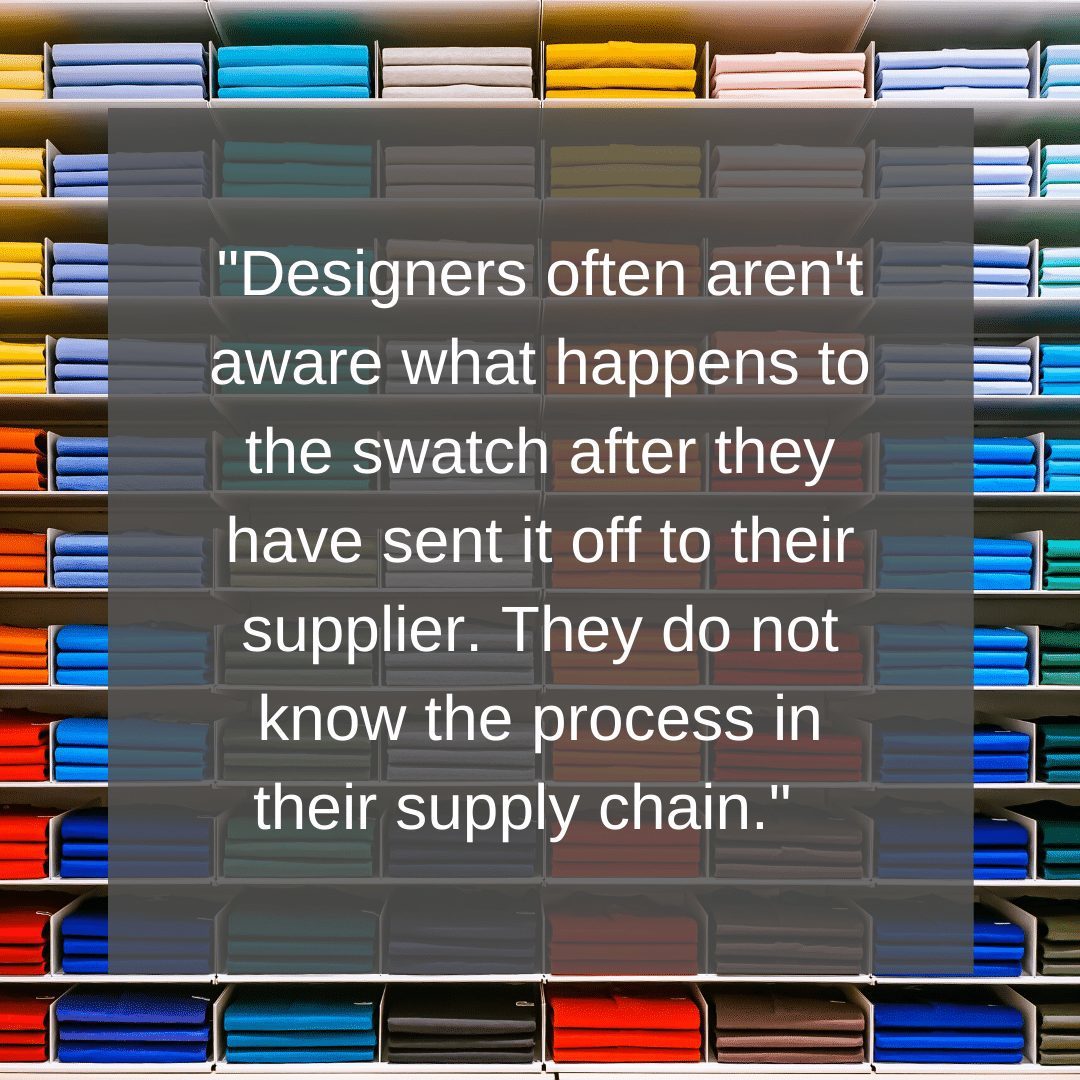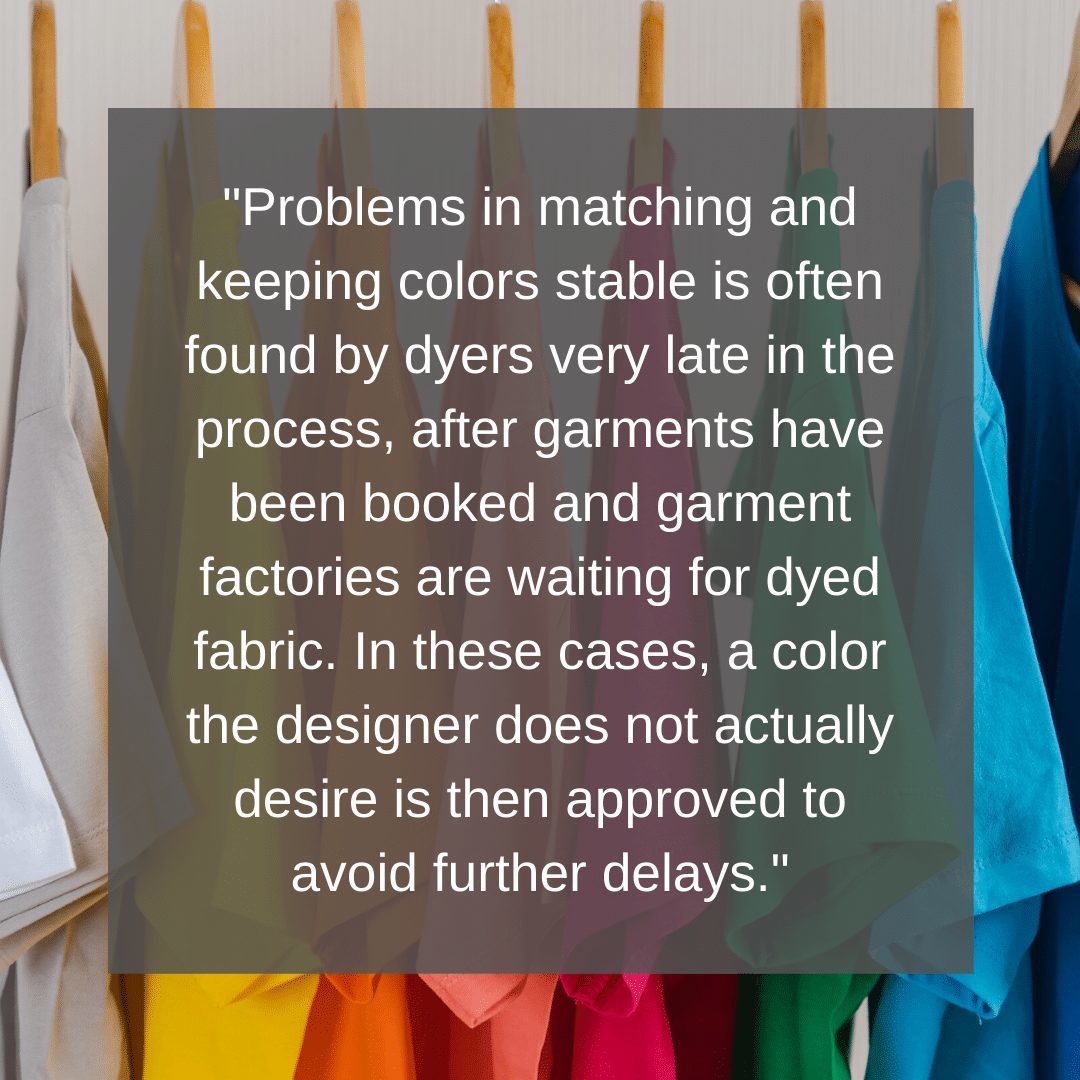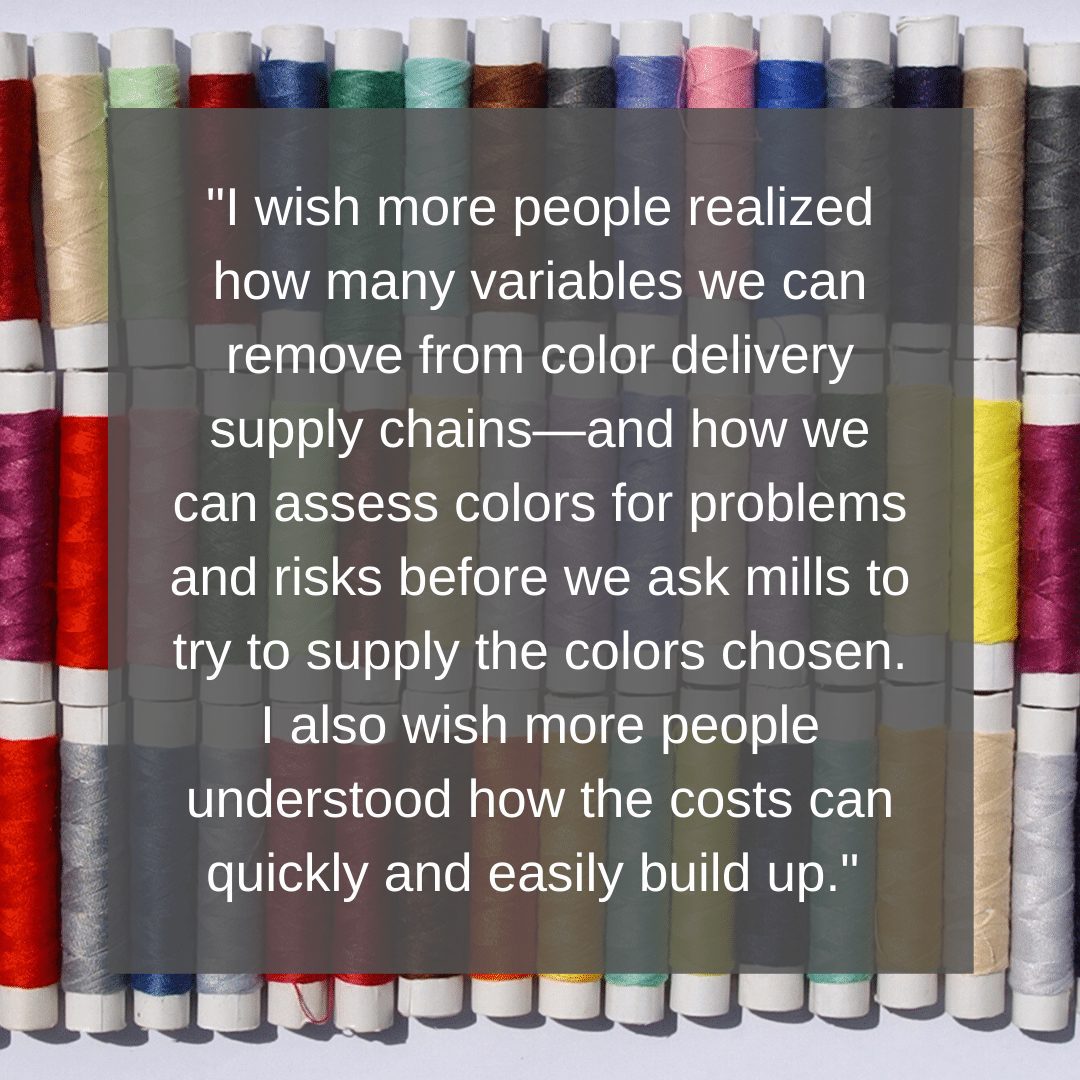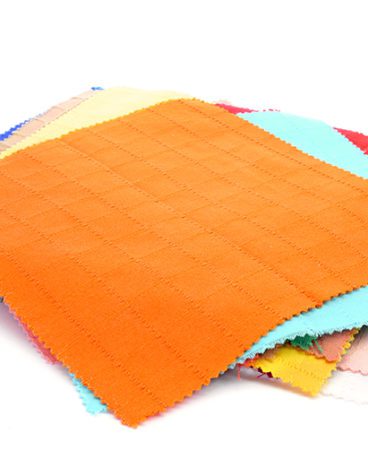Why is it so important to control color?
Perhaps the better question is: How many things can go wrong from color inspiration to final product?
(Answer: A LOT)
To dive deeper into this topic, we spoke with John Newton, Head of Color Technology at Coloro. He’s on a mission to debunk the all-too-common assumption that incorrect lab dips are a necessary cost of doing business in the textile industry.
Datacolor: In your experience, how many people fully understand the importance of controlling color?
John Newton: The understanding towards this has been much lower than I had anticipated going into the industry. Designers often aren’t aware what happens to the swatch after they have sent it off to their supplier. They do not know the processes in their supply chain.
However, companies that have an in-house color team or color manager are far more equipped with this knowledge. These people try to educate the rest of the company on the importance of controlling color.

DC: With the companies you speak to, is there anything that surprises you about the awareness (or lack of awareness) about color?
JN: We work with a lot of activewear brands, and I have been blown away by the wealth of knowledge within their color teams. They have to understand how colors will work on a wealth of different performance fabrics and constantly be at the forefront of innovation. They fuse both the creative, trend-led side of color with the technical and scientific side so beautifully.
Then, on the other end of the spectrum, there are those who just have not had the education or internal training on how important color — and color accuracy — is.
DC: Can you take us through the journey of a color from design through production? What can go wrong at each step of that journey without the proper tools in place?
JN: First, a color is selected. This could be directly chosen from a physical color standard provided by a company like Coloro. Or from a PLM library or Adobe product – which will usually in turn be linked to a physical and digital color system library. This takes the color safely from the on-screen image (which varies device to device and is somewhat an illusion) to a target color for a dyer to produce.
But it could also be from a physical item like a leaf. I’d strongly advise against sending a leaf to a dyer! It will discolor in no time – and what light situation was the designer in when they saw the lovely colored leaf? I’d suggest at this stage get the leaf into a light box and match to a physical textile standard in a known light. Or if you have a spectrophotometer – take a reading or use a hand-held colorimeter like ColorReaderPRO to read the color – in standard daylight – and find the nearest color in the Coloro library. Finally, perhaps you really should get that leaf back to the designer — with the textile standard alongside to approve — before the precious leaf changes from green to gold!
(Editor’s note: If the feasibility of a color is not already known, there is software available that allows you to create dye formulations to understand the feasibility of colors on different substrates. This is how certified color standards are created and digital QTX files are derived.)
Problems in matching and keeping colors stable are often found by dyers very late in the process, after garments have been booked and garment factories are waiting for the dyed fabric. In these cases, a color the designer does not actually desire is then approved to avoid further delays.

Then bulk color is assessed for approval. Retail head offices without professional color departments can also become part of the problem at this stage. They are often known to check color at their desk or by a window. Meaning the dyer has no idea which light source they are checking under. And color will change appearance depending on time of day, office lighting and more. Then the dyer gets an unfair rejection, tries to improve, re-submits, and on we go!
Digital color management helps improve color consistency. Clear details of all machine settings are stored for digital readings (change any one of these and readings will become inaccurate). And whenever visual appraisals are done, it’s important to use certified matching cabinets and make sure the team evaluating color is tested for their color vision.
DC: What do you think are the biggest inefficiencies throughout this process?
JN:
- Not checking if colors work in the supply chain before sending standards out. This causes a lot of delay, cost and disappointment—often right at the point of delivery to stores when changes just cannot be made.
- Not using QTX files to communicate digital target standards—if they are accurate, a good dyer can use these to start working on dye recipes.
- Not using digital approvals whenever possible. This can really speed up submission of color and avoids costly shipping of submits to retailers
DC: When it comes to avoiding these inefficiencies, what do you wish more people knew?
JN: I wish people realized how many variables we can remove from color delivery supply chains—and how we can assess colors for problems and risks before we ask mills to try to supply the colors chosen.
I also wish more people understood how the costs can quickly and easily build up. Late shipment costs, re-dyes, time-consuming color checks with both office admin staff and ultimately senior decision makers, delivering only ‘best can do’ approvals of color—and then potentially reducing sales.

DC: How often do you speak with companies that have simply accepted multiple incorrect lab dips as a reality of working with color?
JN: This appears to be the way some companies have evolved to work, relying on dated color systems and unreliable standards. We have found that some brands even schedule in time for the back and forth of incorrect lab dips, and still end up settling for an incorrect color.
DC: In your opinion, how much education is there left to do when it comes to controlling color?
JN: Plenty. However, the basic knowledge that color on-screen, in print and under different illuminants will potentially look different could go a long way in arming a designer with a good starting point.
At Coloro, as we speak to clients, we assess how much they understand. And from there, we make the benefits of a clear and accurate color standard known.
The industry also needs to start sharing their success stories and helping each other achieve the perfect hue quicker and more efficiently.
DC: What do you hope to see in the future when it comes to the way companies around the world approach their work with color?
JN: Increased professionalism and an investment in people and systems to help manage color delivery. Which should ultimately save money—and just as importantly get some great color out there… the original color the designers wanted to see and thought we’d love to buy!
Also, supply chains do a very difficult job. I hope that more companies help them by doing more up-front work on proposed colors and palettes to check that they will work, and by defining standards very clearly.
DC: What do you think it will take to get there?
JN: Engaging and interesting education that speaks their language—with practical examples that focus on getting the basics right. Just understanding and applying some basic principles in setting and communicating accurate color standards can make a huge difference.
Thank you to John Newton for sharing your experience. Learn more about the Coloro system here. And explore their latest Key Colors here.
Disclaimer: Coloro is a partner of Datacolor. The views, opinions and insights expressed by Datacolor guest bloggers are those of the authors. They do not inherently express the views of Datacolor and our employees.










